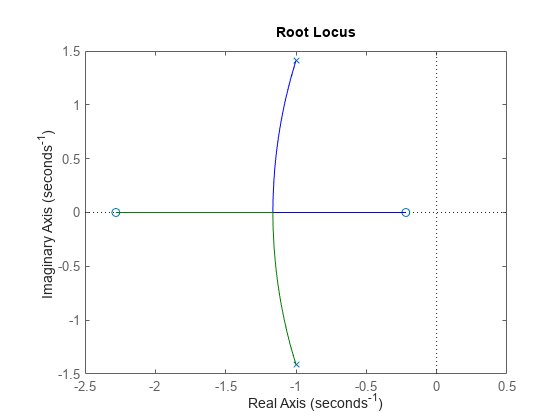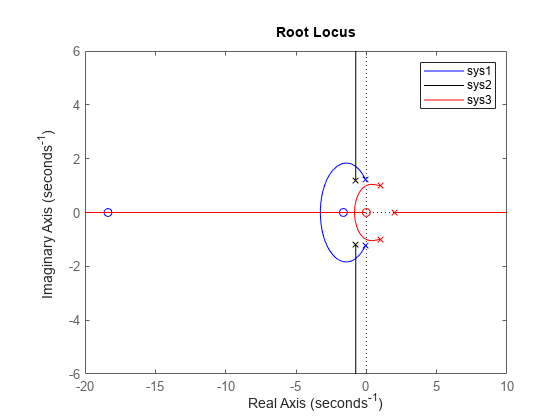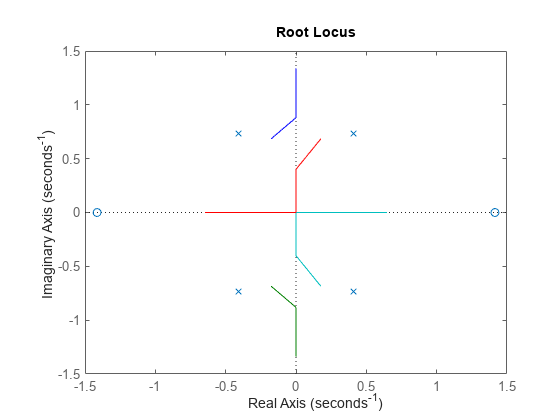rlocus
Root locus of dynamic system
Description
[
calculates the root locus of SISO model r,kout] = rlocus(sys)sys and returns the resulting
vector of feedback gains k and corresponding complex root locations
r.
To produce a smooth root locus, rlocus automatically selects a
set of positive feedback gains.
For more information about the root locus of a dynamic system, see Algorithms.
rlocus(___) plots the root locus of the SISO model
sys with default plotting options for all of the previous input
argument combinations. For more plot customization options, use rlocusplot.
To plot the root locus for multiple dynamic systems on the same plot, you can specify
sysas a comma-separated list of models. For example,rlocus(sys1,sys2,sys3)plots the root locus for three models on the same plot.To specify a color, line style, and marker for each system in the plot, specify a
LineSpecvalue for each system. For example,rlocus(sys1,LineSpec1,sys2,LineSpec2)plots two models and specifies their plot style. For more information on specifying aLineSpecvalue, seerlocusplot.
Examples
Input Arguments
Output Arguments
Tips
For an interactive approach to root locus plotting, see Control System Designer.
For additional options for customizing the appearance of the root locus plot, use
rlocusplot.Plots created using
rlocusdo not support multiline titles or labels specified as string arrays or cell arrays of character vectors. To specify multiline titles and labels, use a single string with anewlinecharacter.rlocus(sys) title("first line" + newline + "second line");
Algorithms
The root locus of a dynamic system contains the closed-loop pole trajectories as a
function of the feedback gain k (assuming negative feedback). Root loci
are used to study the effects of varying feedback gains on closed-loop pole locations. In
turn, these locations provide indirect information on the time and frequency responses.
You can use rlocus to compute the root locus diagram of any of the
following negative feedback loops by setting sys as
shown below in the following figure.

For instance, if sys is a transfer function represented by
the closed-loop poles are the roots of
A root locus plot depicts the trajectories of the closed-loop poles as the feedback gain
k varies from 0 to infinity.


